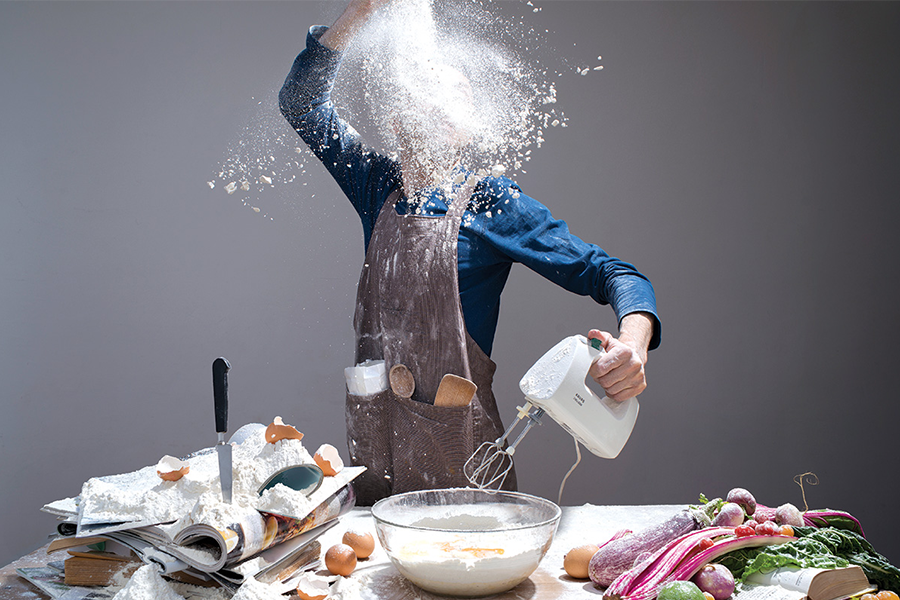
Cooking at home is fun but sometimes can be messy. However, with some careful planning and organization, you can minimize the mess in your kitchen. Here are some tips on help you cook without creating a mess:
Preparation Is Key:
- Before you start cooking, gather all the necessary ingredients, utensils, and cookware you'll need. This will prevent you from running around the kitchen and creating unnecessary messes.
Organize Your Workstation:
- Clear your countertop of any clutter and have a clean, organized workspace. This will give you more room to work and reduce the chances of knocking things over.
Use Cutting Boards and Trays:
- Use cutting boards and trays when chopping, slicing, or dicing ingredients. This will catch any juices or small pieces of food and make cleanup easier.
Plan Your Workflow:
- Plan the order in which you'll prepare and cook ingredients. This helps you use your space efficiently and prevents unnecessary movement around the kitchen.
Use a Trash Bowl or Compost Bin:
- Keep a designated bowl or bin on your countertop for food scraps and trash. This reduces the need to constantly walk to the trash can and minimizes spills along the way.
Keep Kitchen Towels Handy:
- Have clean kitchen towels or paper towels within easy reach. They are useful for wiping up spills, cleaning hands, and handling hot pots and pans.
Invest in Splatter Guards:
- Use splatter guards or screens when cooking with hot oil to prevent grease splatters from spreading across your stove and countertops.
Properly Seal Ingredients:
- Seal ingredients in airtight containers or resealable bags after opening. This prevents spills, keeps ingredients fresh, and makes your pantry or fridge neater.
Use Slow and Controlled Movements:
- Stir, whisk, or mix ingredients with slow and controlled movements to prevent splatters and spills. Avoid vigorous shaking or stirring.
Use Silicone Baking Mats:
- When baking or roasting, use silicone baking mats on your baking sheets. They are non-stick and easy to clean, reducing the need for excessive scrubbing.
Designate Cutting Areas:
- Set aside specific areas for cutting, chopping, and preparing ingredients. This helps contain any mess generated during these tasks.
Cook Over Low Heat:
- When simmering or sautéing, use lower heat settings to reduce the likelihood of food boiling over or sauces splattering.
Double-Check Measurements:
- Carefully measure ingredients to avoid spills or using the wrong amounts in your recipes.
Minimize Clutter:
- Clear your kitchen countertops of unnecessary items and clutter. This gives you more space to work and reduces the chances of knocking things over.
Prevent Drips and Spills:
- When pouring liquids, use a spatula or the back of a spoon to guide the liquid and prevent it from dripping down the side of the container.
Be Attentive:
- Stay focused on your cooking to prevent accidents. Distractions can lead to spills and overcooking.
Clean as You Go:
- Whenever you have a spare moment, wipe down surfaces and wash dishes you no longer need. This maintains a tidy workspace throughout the cooking process.
Have a Soaking Station:
- Fill one side of your sink with warm, soapy water to soak dirty dishes and utensils. This makes cleanup easier later on.
Remember, practice makes perfect. The more you cook, the better you'll become at minimizing messes and streamlining your cooking process. Also, some mess is inevitable in the kitchen, and it's all part of the cooking process. The key is to stay organized, take your time, and clean up as you go to make the cleanup process much more manageable.











